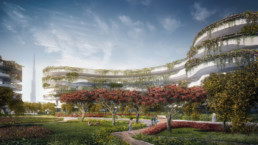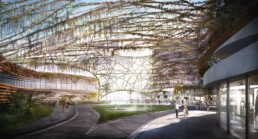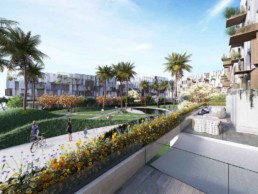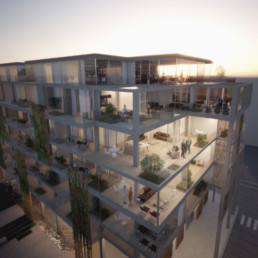What is the kind of world that we want to live and thrive in?
Macro-trends that defined the world of the near past have long been defined: world geopolitics; high-speed telecommunications; AI; climate change. Today, humanity has received a rough jolt; we are now catapulted towards a ‘strange’ tomorrow. So the main question, in my view, is: what impact will this new condition have on our established models of the city and our behavior as citizens?
Two main drivers will guide this process: public health– improving the level of hygiene, disinfection and maintenance of buildings, and a lower propensity to physical mobility driven by the new technologies with which everyone is learning to live.
The world will have to achieve another balance of urbanization, density, quality of life and sustainability of the model, both from an economic and environmental point of view. The city is the only model of social life and provides aggregation on a human and economic level, and perhaps also of the environment.
It is the ‘work from home’ concept that becomes the central to this new way of thinking about cities. Interestingly, these models already exist. The Roman Palace, the Castle, the farmhouses, etc .;the work was carried out at home. Until yesterday, we lived with the obligation to move and within just a few weeks, an unknown virus has taught us that we could do without it, brutally accelerating digitization of the work place, a process that was already underway in many sectors.
The need for hygiene to be guaranteed will entail higher maintenance and transformation costs which, together with the cost of real estate and less relocation, will lead to a natural optimization of the offices, resulting in new and more advanced forms of co-working. The large multinationals will be able to organize themselves better without investing in large and expensive headquarters, but in capillary and neighbor friendly networks of multipurpose spaces, suitable for both the community during the night time and for work during the day. Small, multi-departmental offices, hyper-connected and scattered throughout the area, close to places of residence, open 24×7 for 365 days, where people can experience even more interesting relationships.
So, the physical relationship will no longer be that of ‘home to office’, but will evolve towards the most efficient, safe, relaxing, economic, sustainable, social outcome: ‘home to office space at home to condominium to neighborhood co-working to HQ office to virtual office’.
Will our homes change? They will evolve.
Could it be the end of the skyscraper?
The public, condominium and private green open spaces will expand greatly in the cities of tomorrow. For some time now they have been deemed essential and will increasingly be so by integrating spaces for play, leisure, sporting activities, for small community vegetable gardens and much more. The psychological sense of well-being and purity is fundamental as well as the need to have safe paths for personal mobility.
It will be important for us architects to envision future projects, to define higher quality and design standards, to imagine and guide new trends that will enable a safer, more peaceful, pleasant and beautiful way of life. But part of the commitment is also up to the legislators in accepting that the paradigm has changed and that the cultural standards founded in the 1920s are no longer current.
So, will everything change? Should we get rid of what has been done so far? Will it be the death of our urban landscapes? I don’t think so at all; humanity needs legacy and vision. Our historic cities, our existing models are the basis from which to start. In a contemporary and future key, of course, with new standards and possibilities for intervention in the existing, without increasing what we have but modifying it, replacing it and using it better.
How can we tackle and define this path that will sculpt our habits, our standards, our economic development and sustainability models, the regulatory body, and much more? Let us go into the unknown. We already possess the cultural and intellectual tools to be able to plan this change, with vision and foresight in its evolutionary historical perspective and with the foundations of our values well anchored in the awareness of our ecosystem.
Only a New Humanism principle will be able to support us in this historical situation. This humanistic approach will be the infrastructure through which we can positively convey the strength and impact of technology. We may need other tools, new and unknown, to deal with unknowns that come from the immensity of nature and the evolution of AI. But the fundamental guiding principle of humanism is here to stay.
New Humanism– the Earth is craving it, Humanity is making an appeal for it and AI cannot stop it.



